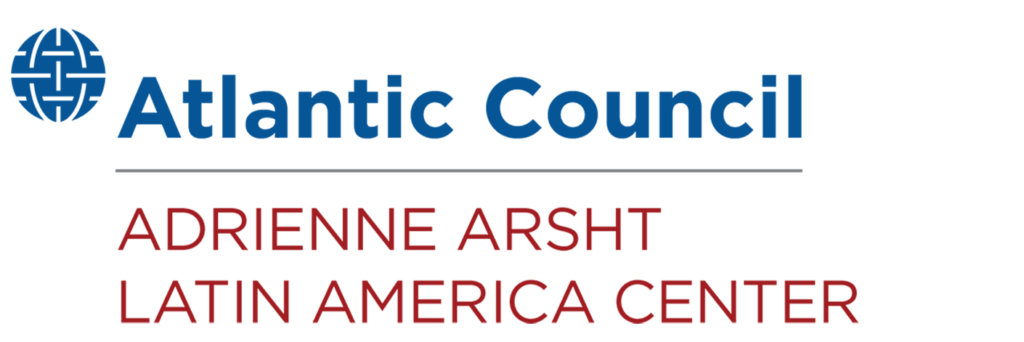Diversify the bilateral agenda
TO COMMEMORATE THE BICENTENNIAL of US-Colombia diplomatic relations, we should prioritize areas of cooperation beyond hemispheric security, the fight against transnational organized crime, and drug trafficking—topics that have historically governed our agenda. It is in our countries’ best interest to diversify our bilateral strategy, dedicating more attention to sustainable development objectives. This will consolidate decades of economic and security gains in Colombia, positioning the country as a stronger and more strategic partner to the United States.
Strengthening the relationship and deepening trade, investment, and tourism is key to achieving shared economic objectives. It will capitalize on the unlimited opportunities to enhance US-Colombia cooperation in agriculture, agribusiness, clothing, metalworking, and knowledge-based services.
As we work to diversify our agenda, it will be imperative to expand spaces for bilateral dialogue, promote education and job creation, advance Colombia’s digital transformation, and support technology transfers and investment in large-scale projects. Such prioritization can help boost development, particularly in Colombia’s most vulnerable regions.
With critical US support, Colombia has strengthened the rule of law and increased state presence in remote, conflict-affected territories over the past two decades. Now is the time to build on Plan Colombia and its successor programs by investing in a social agenda that prioritizes education, employment, and well-being in territories historically disenfranchised, where crime continues to prevail.
The time is right
During the UN General Assembly in September 2010, the administrations of President Barack Obama and President Juan Manuel Santos laid the groundwork to expand US-Colombia cooperation beyond security issues to include social development, economic growth, the environment, education, energy, and human rights.
To further advance this agenda, the United States and Colombia should leverage existing mechanisms for bilateral dialogue and engagement, like the US-Colombia High-Level Dialogue (HLD). The HLD should periodically evaluate progress and ensure that counter-narcotics and law enforcement cooperation is complemented with efforts to positively transform territories, including programs to improve public goods provision, roads, land titling, and economic opportunities.
According to local media, the February 2022 bilateral meeting with US Under Secretary of State for Political Affairs Victoria Nuland focused on US-Colombia collaboration in addressing violence and potential security threats, including cybercrime. Certainly, the scope of high-level bilateral meetings should be broader. Moving forward, we should focus on job creation, entrepreneurship opportunities, and export diversification. This will benefit Colombia’s most vulnerable regions, particularly if we create a market in the United States for licit agricultural goods produced as part of crop substitution programs, including avocados, cacao, and mangoes.
Future iterations of the HLD and other bilateral meetings should include participation from the private sector. Public-private collaboration is funda- mental for the US-Colombia alliance and the success of development pro- grams and efforts to strengthen institutions across the country. Private sector participation should be intentional and substantive, with participants joining as observers in thematic and preparatory roundtables and offering issue-specific recommendations.
Education and employment
There is no question that reducing corruption, illegality, and violence requires efforts to improve peoples’ livelihoods, enhance skills and knowledge, and advance local leadership. This happens by investing in schools, universities, and technical training programs while promoting innovation and economic opportunities through entrepreneurship and employment.
Advancing education, training, and entrepreneurship programs based on labor market needs, particularly in municipalities with fewer possibilities, would generate more economic opportunities and contribute to reducing historic inequalities. These efforts would be particularly impactful if complemented with long-term consulting from specialized US centers and investments in English training, bilingualism, and bilateral exchange programs.
We are a country of micro and small businesses. According to the Ministry of Labor, these represent more than 90 percent of Colombia’s productive sector and 80 percent of total employment.1Government of Colombia, “‘MiPymes represent more than 90% of the national productive sector and generate 80% of employment in Colombia’: Minister Alicia Arango,” Ministry of Labor, September 26, 2019, https://www.mintrabajo.gov.co/prensa/comunicados/2019/septiembre/ mipymes-representan-mas-de-90-del-sector-productivo-nacional-y-generan-el-80-del-empleo-en-colombia-ministra-alicia-arango. These businesses need to be strengthened via training, technology transfer, digital transformation programs, and increased financing and technical advice to meet the needs of new industries. While efforts to support small and medium enterprises in Colombia are considerable, they are limited in scope and budget and would benefit from a stronger partnership with the United States.
More investment and trade
The United States is Colombia’s leading trading partner, receiving 27 percent of Colombia’s exports in 2021.2“Boletín Técnico Exportaciones (EXPO),” National Administrative Department of Statistics (DANE), January 31, 2022, https://www.dane.gov.co/files/investigaciones/boletines/exportaciones/boletin_ exportaciones_dic21.pdf. The United States is also Colombia’s principal foreign investor, accounting for 19 percent of total foreign direct investment between January and September 2021.3Flujos de inversiones directas en la economía colombiana Enero – Diciembre de 2021, Banco de la República, March 2022, https://www.banrep.gov.co/sites/default/files/nota_de_prensa_inversion_ directa.pdf. Moreover, the United States is the foremost supplier of foreign travelers, accounting for 24 percent of international tourists in 2021.4“Colombia Tourism Statistics 1995-2022,” Macrotrends, accessed March 25, 2022, https://www. macrotrends.net/countries/COL/colombia/tourism-statistics.
Colombia must continue to attract US investment for extensive infra- structure and development projects, including secondary roads and 5G projects, and the modernization of ports and airports. As Colombia’s principal investor, the United States should not lose ground, since China would pick up the slack, as evidenced by its participation in the Bogotá metro system, mining projects in the Department of Antioquia, and increased trade. Recognizing that no US firm placed bids on the Bogotá metro or on any of Colombia’s large road projects in the past six years,5Atlantic Council US-Colombia Task Force, A Planfor Colombia’s COVID-19Recovery and WhyitMatters, Atlantic Council’s Adrienne Arsht Institute, December 2021, https://www.atlanticcouncil. org/wp-content/uploads/2021/12/AC_ColombiaTaskForce_v18.pdf. the United States should strive to position itself as Colombia’s partner of choice. This would help to counter China’s growing economic influence in the region.
To secure more US investment in infrastructure, it is essential to make progress on issues such as the double taxation agreement between the United States and Colombia. The approximately 450 US companies doing business in Colombia in 2022 generate more than 100,000 direct and indirect jobs.6Government of Colombia, “Colombia – U.S. Investment Roadmap,” accessed March 25, 2022, https://newsletter.procolombia.co/2019/inversion/col_us_invMap/COLOMBIA_US_ INVESTMENT_ROADMAP.pdf. Colombia could maximize this positive impact by providing more legal certainty, which allows for long-term planning and investments aligned with social development objectives.
In addition, we must accelerate full implementation of the US-Colombia Trade Promotion Agreement (TPA) so that competitive Colombian products reap the benefits of entry into the United States. Here, the United States could speed up and harmonize the approval process for Colombian agricultural and livestock products pre-approved under the TPA, including passion flowers, yellow dragon fruits, blueberries, poultry, and bovine meat.
Likewise, actions must be prioritized to allow greater trade accumulation between the two countries and with the Pacific Alliance to realize emerging opportunities in value chains. We should also encourage TPA administrators to update the agreement using available tools and mechanisms under the established free trade commission. Implementing technology transfer programs to improve product development and competitiveness and enhancing access to public procurement are also critical areas for future bilateral engagement.
Looking forward
Continued bipartisan support in the United States and renewed commitment from all sectors to the US-Colombia partnership are key for the future of our alliance. To move the relationship forward, alignment of interests and close coordination between the public and private sectors in both countries is essential, complimented by strong support from civil society.
The time is right to diversify and expand the bilateral agenda, for diplomacy and the public sector to work side-by-side with business to expand trade, investment, and tourism, prioritizing a vision of social development that strengthens Colombia and its democratic institutions. This would posi tion Colombia as an even stronger US partner in promoting stability and prosperity across the region.
Our US partners are aware this is not the time for loose ends. The priority must be our shared hemisphere, especially when other powers are eager to occupy economic, political, and geostrategic spaces.
Although there are two parties in this relationship, the push for diversification should come from us Colombians. To negotiate more effectively, we should understand how valuable we are as a partner to the United States. Modern diplomacy should be based on shared interests and continued respect for democratic principles and sovereignty, with a clear purpose and feasible objectives, while remaining assertive when faced with challenges.
Related Allies essays
A roadmap for a new type of engagement
This moment opens the door for a reimagined US partnership with Colombia based on a shared vision for a more prosperous, inclusive, and sustainable future.
Related program

The Adrienne Arsht Latin America Center broadens understanding of regional transformations and delivers constructive, results-oriented solutions to inform how the public and private sectors can advance hemispheric prosperity.
Image: Employees organise bouquets of flowers to be exported overseas, ahead of Valentine's Day, at a farm in Facatativa, Colombia February 1, 2017. Picture Taken February 1, 2017. REUTERS/Jaime Saldarriaga - RC12B31D4A30
